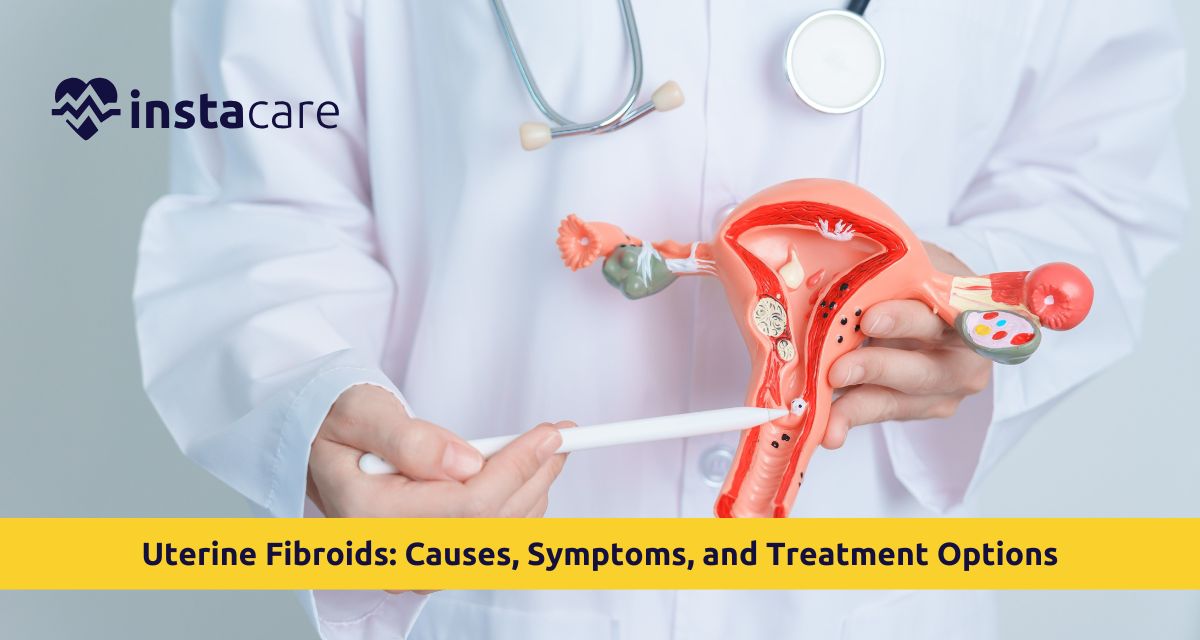What Are Uterine Fibroids?
Uterine fibroids are benign uterine wall tumors composed of fibrous tissue and smooth muscle. They vary in size from microscopic to extremely large masses that change the contour of the uterus.The most frequent types of fibroids are:
- Intramural fibroids are within the uterine wall and are most prevalent, and cause pelvic pressure and bulky menstruation
- Subserosal fibroids lie on the outermost surface of the uterus, which usually develops without symptom at the beginning of menstruation but can compress adjacent organs
- Submucosal fibroids grow beneath the uterine lining, normally with symptoms even at small size
- Pedunculated fibroids have stalk support with stabbing pain with twisting of the pedicle
Causes and Risk Factors of Uterine Fibroids
- The principal stimuli are hormonal. Progesterone and estrogen stimulate fibroid growth, and as hormone secretion decreases after menopause, they regress.
- Genetic factors also play a role, with hereditary risk factors increasing the likelihood of fibroids. There are several different gene changes in fibroid cells compared to uterine cells.
- Risk factors for fibroids include large and include age (most common in 30s-40s), race (African Americans most at risk), weight, and low vitamin D. Lifestyle factors of diet, level of physical exercise, and stress may also be contributory.
Common Symptoms of Uterine Fibroids
- Most frequent signs are menstrual alterations, including heavy menses, prolonged menses or intermenstrual bleeding. Heavy menstrual bleeding can be accompanied by anemia manifested as weakness and fatigue.
- Pressure and pain in lower abdomen are most severe, especially in the situation of large masses. Women have persistent pressure or lower abdominal fullness that is exacerbated by menses.
- Successful fibroids pain management is required in the case of chronic distress. Some have stabbing pain due to deformed fibroids, while others have throbbing that is persistent.
- Urinary symptoms occur if fibroids are causing obstruction to the bladder, leading to frequent or incomplete emptying of the bladder.
- Effects on infertility are the outcomes of quality of life. Fibroids and pregnancy complications involve inability to conceive, risk of miscarriage, and complications at delivery.
Read More: What Is Cystic Fibrosis? Causes, Symptoms, and Treatments
How Uterine Fibroids Are Diagnosed?
- Menstrual cycle, pain intensity, and family history are reviewed by health care providers. Pelvic examinations may reveal larger, irregular uterine contour.
- Imaging techniques provide accurate visualization. Transvaginal ultrasound is the first diagnostic technique, fibroids vs cysts differentiation. MRI provides optimal detail for fibroids removal surgery planning.
- Laboratory tests unveil the impact of symptoms on health, for example, anemia and endocrine level testing. Hysteroscopies allow for direct visualization of the uterine cavity.
Treatment Options for Uterine Fibroids
- Fibroids medication is the initial line. Bleeding and size are controlled using hormonal drugs such as birth control pills, progestin-releasing intrauterine devices, and GnRH agonists.
- Tranexamic acid can be employed for bleeding control and NSAIDs can be employed in pain management. Progressed selective progesterone receptor modulators are promising in shrinking fibroids.
- Minimally invasive intervention is effective with minimal recovery. Fibroids are starved of blood supply and tissue damage are incision-free using focused ultrasound.
- Surgery is the second choice when conservative treatment fails. Myomectomy removes individual fibroids but not the uterus and is ideal for women who want to bear a child. The removal of more than one fibroid may be performed by laparoscopic, robotic, or open surgery.
- Hysterectomy has permanent effects and cannot recur in women who are finished with childbearing or have negative nonresponsive symptoms and fibroids complications.
Lifestyle and Home Remedies of Uterine Fibroids
- Adjustment of diet is on anti-inflammatory foods like green vegetables, fatty fish, and whole grains and avoiding processed food and red meat.
- Natural treatment for fibroids are turmeric and green tea extract but ladies must see physicians prior to their use.
- Exercise and stress management control weight and lower estrogen. Stress management through meditation and yoga improve symptom control.
- Heat therapy relief of fibroid pain naturally by hot bath or heat application, relaxing uterine smooth muscles.
- Fibroids prevention is attained by hormonal balance through normal exercise, normal weight, adequate vitamin D, and low alcohol consumption.
Conclusion

